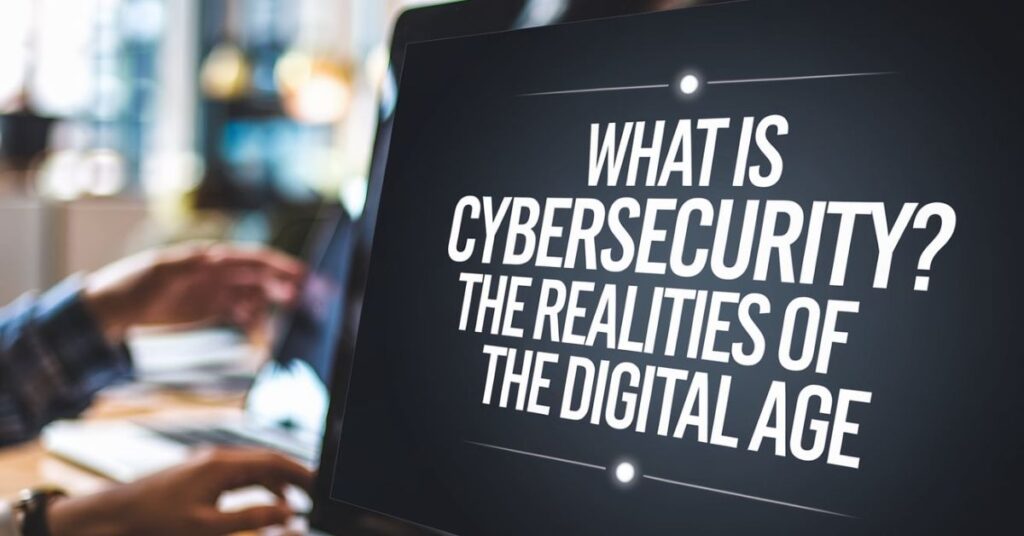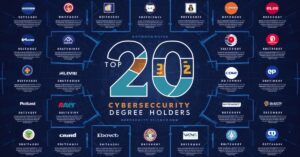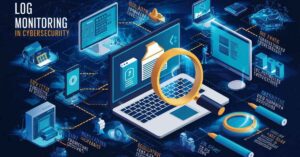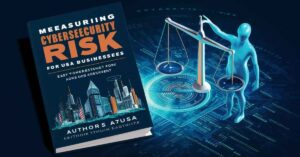In today’s hyperconnected world, the term “cybersecurity” has become as ubiquitous as the digital devices we rely on daily. But what exactly is cybersecurity, and why has it become such a critical concern in our modern era? This comprehensive guide will delve into the intricacies of cybersecurity, exploring its evolution, relevance, and the very real threats that lurk in the digital shadows. Whether you’re a business owner, a student, or simply an internet user, understanding cybersecurity is no longer optional—it’s essential. What Is Cybersecurity? The Realities of the Digital Age.
A Personal Cybersecurity Adventure
Let me share a brief anecdote that underscores the importance of cybersecurity in our everyday lives. Last year, I received an urgent email purportedly from my bank, warning me of suspicious activity on my account. The message looked legitimate, complete with the bank’s logo and a link to “verify my identity.” Heart racing, I nearly clicked the link—but something felt off. I paused, took a deep breath, and decided to call my bank directly instead.
As it turned out, the email was a sophisticated phishing attempt. Had I clicked that link and entered my credentials, cybercriminals could have gained access to my financial information. This experience taught me a valuable lesson: in the digital age, vigilance is our first line of defense against cyber threats. Realities of the digital age, cybersecurity
What Do We Mean by Cybersecurity?
Cybersecurity refers to the practice of protecting systems, networks, programs, and data from digital attacks. It encompasses a wide range of technologies, processes, and practices designed to defend against, detect, and respond to threats in the cyber realm. Realities of the digital age, cybersecurity
The three key pillars of cybersecurity are:
- Confidentiality: Ensuring that data is kept private and accessible only to authorized parties.
- Integrity: Maintaining the accuracy and consistency of data throughout its lifecycle.
- Availability: Guarantee that data and resources are accessible to authorized users when needed.
While often used interchangeably, cybersecurity differs from information security in its scope. Information security focuses on protecting all forms of information, both digital and physical, while cybersecurity specifically deals with safeguarding digital information and systems. What Is Cybersecurity? The Realities of the Digital Age.
Evolution of the Cyber and Network Security Profession
The cybersecurity field has come a long way since the early days of computer security. Here’s a brief timeline of its evolution:
| Year | Milestone |
|---|---|
| 1970s | Early computer security focuses on physical access control |
| 1980s | Introduction of antivirus software to combat computer viruses |
| 1990s | Rise of the internet leads to new security challenges |
| 2000s | Emergence of sophisticated malware and organized cybercrime |
| 2010s | Cloud computing and IoT expand the cybersecurity landscape |
| 2020s | AI and machine learning become integral to cybersecurity strategies |
Today, the cybersecurity profession is more dynamic than ever, with experts predicting a global shortage of 3.5 million cybersecurity professionals by 2025. This gap underscores the growing importance and complexity of the field.
The Relevance of Cybersecurity

In our digital age, cybersecurity is not just relevant—it’s critical. Here’s why:
- Expanding Attack Surface: With the proliferation of connected devices and cloud services, the potential entry points for cybercriminals have multiplied exponentially.
- Economic Impact: Cybercrime is projected to cost the world $10.5 trillion annually by 2025, according to Cybersecurity Ventures.
- National Security: Cyber attacks can threaten critical infrastructure, making cybersecurity a matter of national security.
- Personal Privacy: As we share more of our lives online, protecting personal data has become increasingly important.
Industries particularly affected by cybersecurity concerns include:
- Finance and Banking
- Healthcare
- Government and Defense
- Retail and E-commerce
- Energy and Utilities
The cost of inadequate cybersecurity measures can be staggering. Beyond financial losses, organizations face reputational damage, legal consequences, and loss of customer trust. Realities of the digital age, cybersecurity
Understanding Cyber Threats
A cyber threat is any malicious act that seeks to damage data, steal data, or disrupt digital life in general. These threats are constantly evolving, driven by various motivations:
- Financial gain
- Espionage
- Political or ideological agendas
- Personal vendettas
As technology advances, so do the sophistication and scale of cyber threats. Today’s cybercriminals are often well-funded, organized, and patient, capable of executing complex, long-term attacks. Realities of the digital age, cybersecurity.
Classification of Cyber Threats
Cyber threats can be classified in several ways:
- Internal vs. External Threats
- Internal: Originate from within the organization (e.g., disgruntled employees)
- External: Come from outside the organization (e.g., hackers, cybercriminal groups)
- Passive vs. Active Threats
- Passive: Attempt to gain information without affecting system resources
- Active: Attempt to alter system resources or affect their operation
- Targeted vs. Untargeted Attacks
- Targeted: Aimed at specific individuals or organizations
- Untargeted: Cast a wide net, hoping to catch vulnerable victims
Cyberthreats Include Malware, Phishing, and Ransomware

Malware
Malware, short for malicious software, is any program or file that is harmful to a computer user. Types of malware include:
- Viruses
- Worms
- Trojans
- Spyware
- Adware
Phishing
Phishing is a social engineering attack that tricks users into revealing sensitive information. A typical phishing attack involves:
- Creating a fake website or email that mimics a legitimate entity
- Sending the fake communication to potential victims
- Enticing victims to enter sensitive information (e.g., passwords, credit card numbers)
- Using the stolen information for malicious purposes
Ransomware
Ransomware is a type of malware that encrypts a victim’s files and demands a ransom for their release. The impact of ransomware can be devastating, as evidenced by high-profile attacks like the Colonial Pipeline incident in 2021, which disrupted fuel supplies across the southeastern United States.
Real-World Examples and Case Studies of Major Cyber Incidents
Let’s examine a few notable cyberattacks to understand their impact and the lessons learned:
- Equifax Data Breach (2017)
- Impact: 147 million consumers affected
- Cause: Unpatched vulnerability in web application software
- Lesson: Timely patching and robust security practices are crucial
- SolarWinds Supply Chain Attack (2020)
- Impact: Affected 18,000 organizations, including U.S. government agencies
- Method: Malicious code injected into software updates
- Lesson: Supply chain security is critical in the interconnected digital ecosystem
- Colonial Pipeline Ransomware Attack (2021)
- Impact: Disrupted fuel supply in the southeastern U.S. for days
- Method: Compromised VPN password
- Lesson: Basic security measures like multi-factor authentication can prevent major incidents
These incidents highlight the evolving nature of cyber threats and the need for constant vigilance and adaptation in cybersecurity practices.
Data Breaches
A data breach occurs when sensitive, protected, or confidential data is copied, transmitted, viewed, stolen, or used by an unauthorized individual. Common causes include:
- Weak and stolen credentials
- Application vulnerabilities
- Malware
- Social engineering
- Insider threats
The long-term consequences of data breaches can be severe and far-reaching:
- Financial losses
- Reputational damage
- Legal and regulatory penalties
- Loss of intellectual property
- Operational disruption
Recent Major Data Breach Case Studies
Capital One Data Breach (2019)
- What Happened: A former Amazon Web Services employee exploited a misconfigured web application firewall to access Capital One’s servers.
- Impact: 100 million individuals in the United States and Canada were affected, with 140,000 Social Security numbers and 80,000 bank account numbers compromised.
- Aftermath: Capital One agreed to pay $190 million to settle a class-action lawsuit and was fined $80 million by regulators.
Marriott International Data Breach (2018)
- What Happened: Attackers gained unauthorized access to the reservation system of Starwood hotels, which Marriott had acquired.
- Impact: Personal information of up to 500 million guests was exposed, including names, addresses, phone numbers, email addresses, passport numbers, and in some cases, credit card information.
- Aftermath: Marriott faced multiple lawsuits and was fined £18.4 million by the UK’s Information Commissioner’s Office.
These case studies underscore the importance of robust cybersecurity measures, including thorough due diligence during mergers and acquisitions, and the need for continuous monitoring and improvement of security systems.
The Effects of Data Breaches on Businesses and Individuals
The repercussions of data breaches can be profound and long-lasting:
For Businesses:
- Financial Costs: Direct costs include investigation, remediation, legal fees, and potential fines. IBM’s Cost of a Data Breach Report 2021 puts the average cost at $4.24 million per incident.
- Reputational Damage: Loss of customer trust can lead to decreased sales and market share.
- Operational Disruption: Breaches can cause significant downtime and loss of productivity.
- Legal Consequences: Businesses may face lawsuits from affected customers and regulatory penalties.
For Individuals:
- Financial Loss: Victims may experience fraudulent charges or identity theft.
- Privacy Violations: Personal information can be exposed and misused.
- Emotional Distress: The stress and anxiety of dealing with a breach can be significant.
- Time and Effort: Resolving issues related to a data breach can be time-consuming and frustrating.
Data Breach Prevention
Preventing data breaches requires a multi-faceted approach:
- Implement Strong Access Controls
- Use strong, unique passwords
- Implement multi-factor authentication
- Apply the principle of least privilege
- Keep Systems Updated
- Regularly patch and update all software and systems
- Conduct regular vulnerability assessments
- Encrypt Sensitive Data
- Use strong encryption for data at rest and in transit
- Employee Training
- Conduct regular cybersecurity awareness training
- Teach employees to recognize phishing attempts and other social engineering tactics
- Incident Response Plan
- Develop and regularly test an incident response plan
- Ensure all employees know their roles in case of a breach
- Regular Audits and Penetration Testing
- Conduct regular security audits
- Perform penetration testing to identify vulnerabilities
- Secure Network Configuration
- Use firewalls and network segmentation
- Monitor network traffic for suspicious activity
The Role of Higher Education in Cybersecurity
As cyber threats continue to evolve, the demand for skilled cybersecurity professionals is skyrocketing. Higher education plays a crucial role in meeting this demand:
- Degree Programs: Universities are offering specialized cybersecurity degrees at undergraduate and graduate levels.
- Certifications: Industry-recognized certifications like CompTIA Security+, CISSP, and CEH provide focused skill development.
- Research: Academic institutions are at the forefront of cybersecurity research, developing new technologies and methodologies to combat emerging threats.
- Industry Partnerships: Collaborations between academia and industry ensure that educational programs remain relevant to real-world challenges.
FAQs
Q: What is cyber security in the digital age?
A: In the digital age, cybersecurity encompasses the technologies, processes, and practices designed to protect networks, devices, programs, and data from attack, damage, or unauthorized access. It’s a constantly evolving field that addresses threats to our increasingly digital lives and businesses.
Q: What is the definition of security in the digital age?
A: Digital security refers to the measures taken to protect digital information, assets, and systems from unauthorized access, theft, disruption, or attack. It includes both cybersecurity (protection of digital systems) and information security (protection of data in all forms).
Q: Why is cybersecurity important in today’s digital world?
A: Cybersecurity is crucial because:
- Our lives are increasingly digital, with sensitive personal and financial information stored online.
- Businesses rely heavily on digital systems, making them vulnerable to cyber-attacks.
- Critical infrastructure, including power grids and healthcare systems, are connected to the internet. Realities of the digital age, cybersecurity
Q: What is the threat of the digital age?
A: The digital age brings numerous threats, including:
- Data breaches exposing sensitive information
- Ransomware attacks crippling businesses and infrastructure
- Identity theft and financial fraud
- Cyber espionage threatening national security
Conclusion
As we navigate the complex realities of the digital age, cybersecurity emerges as a critical concern for individuals, businesses, and nations alike. From personal data protection to safeguarding critical infrastructure, the scope of cybersecurity touches every aspect of our digital lives.
Understanding what cybersecurity is and why it matters is the first step in protecting ourselves and our assets. As cyber threats continue to evolve, so must our defenses. This means staying informed about the latest threats and best practices, implementing robust security measures, and fostering a culture of cybersecurity awareness.








